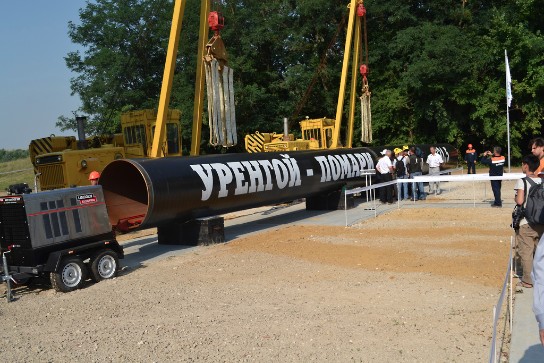
Russia Follows Through on Threat to Reduce Ukraine’s Gas Supply
 Photo courtesy of World Bank Photo Collection / flickr.com.
Photo courtesy of World Bank Photo Collection / flickr.com.
As of 10:00 a.m. Moscow time, Russia has followed through on its threat to reduce gas supplies to Ukraine, in the wake of the two countries’ failure to reach an agreement by today’s deadline. Ukraine was unwilling to acquiesce to a Russian demand for a system of prepayment, while Russia was requesting that Ukraine pay off at least $1.95 billion of its total gas debt of $4 billion. After several failed rounds of trilateral talks facilitated by the European Commission, Russian gas exporter Gazprom has reduced gas supplies to Ukraine’s state-owned Naftogaz, stating that “the Ukrainian company will only receive Russian gas it has paid for.”
According to Gazprom spokesman Sergei Kupriyanov, Moscow is under no legal obligation to continue supplying gas to Naftogaz, given that the Ukrainian company has not paid for the gas by today’s deadline. Ukraine disputes the efficacy of this claim; both Gazprom and Naftogaz have announced intent to sue one another in the Stockholm arbitration institute. Ukraine’s Naftogaz desires to win back up to $6 billion in what it considers to be excessive payment to Russia.
The sharp reduction of gas supply to Ukraine could potentially have an impact on EU consumers, who receive approximately one third of their gas needs from Russia — one half of which comes through Ukrainian gas pipelines. For the time being, however, Gazprom spokesman Sergei Kupriyanov has assured that “gas for European consumers is being delivered at full volume.” Naftogaz remains obligated to transport Europe’s gas (for which they receive transit fees from European customers), regardless of current Ukrainian entanglements with Gazprom. The threat of a gas shortage is also less significant to Europe in the summer months, when gas prices are lower and demand is less, since the majority of natural gas in Europe is used for heating. In addition, after this year’s warm winter, stocks of gas across Europe are high.
Despite the fact that the United States has a long term, invested interest in Europe’s energy stability, and has directly supported the Ukrainian government, it nevertheless has little short-term leverage over the current conflict. The Russian government seems aware of this fact, as evidenced by Alexei Pushkov, the head of the Foreign Affairs Committee in the state Duma, saying today: “Let [Ukrainian Prime Minister Arseniy] Yatsenyuk get shale gas from the United States.” Of course, that is not currently possible, given that the U.S. has no operating gas export facilities, nor does Ukraine have any gas import facilities.
It is not yet clear what Russia’s next move will be, but Russian Deputy Prime Minister Arkady Dvorkovich told news agencies on Monday that any further action will be taken following an upcoming meeting between President Vladimir Putin and Gazprom CEO Alexei Miller.
For a more in-depth look at the intricacies of the current dispute, see ASP’s briefing note, “The Ukraine Crisis and the Geopolitics of Energy.”






[…] peace in Ukraine. Regional tensions are high, due in part to Russia’s decision on Monday to reduce gas supplies to Ukraine in the wake of a failed payment compromise. Nevertheless, Ukrainian Defense Minister Mykhailo Koval […]